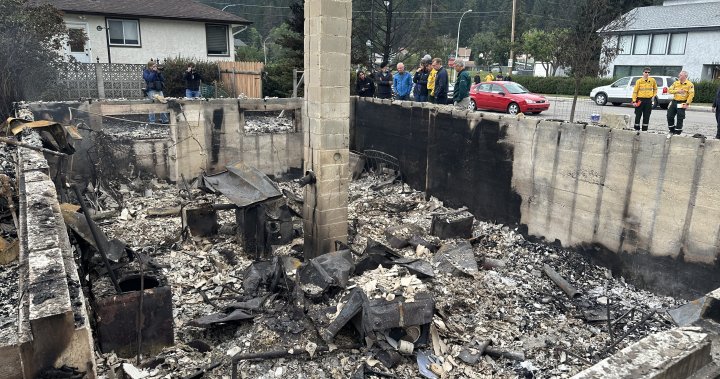The idyllic mountain town of Jasper, Alberta, a renowned tourist destination nestled in the Canadian Rockies, finds itself grappling with a profound housing crisis six months after a devastating wildfire ravaged the community. The inferno, which swept through the town on July 24, 2024, destroyed a third of its buildings, leaving over 600 families homeless and the community struggling to rebuild. At the heart of the recovery effort lies a contentious standoff between the town and the provincial government over the nature and scope of interim housing. While the province has pledged $112 million towards constructing 250 housing units, the conditions attached to this funding have become a major point of contention.
The Alberta government has stipulated that the allocated funds must be used to build permanent single-family homes, adhering to stringent building codes, including regulations for parking and setbacks. The town argues that these requirements are impractical given the limited land available within the national park boundaries. Jasper’s director of recovery, Michael Fark, has emphasized that adhering to these regulations would drastically reduce the number of homes that can be built on the designated land, potentially yielding only 60 units – a far cry from the 600 families in need. This discrepancy, according to Fark, poses a significant impediment to meeting the community’s pressing housing needs and jeopardizes the long-term recovery process. The lack of adequate interim housing threatens the return of displaced families, hampers businesses’ ability to staff for the upcoming tourist season, and casts a shadow over the town’s economic recovery.
The town’s leadership has expressed deep concern over the province’s approach. Mayor Richard Ireland has urged the provincial government to reconsider its stance and collaborate with the municipality and Parks Canada to develop a more viable housing solution that addresses the immediate needs of the community. The town maintains that its priority is to provide sufficient interim housing to allow displaced residents to return and begin rebuilding their lives, while also laying the groundwork for long-term housing solutions. This approach, they argue, necessitates a more flexible and pragmatic approach to housing construction, potentially deviating from the province’s preference for permanent single-family dwellings.
Conversely, Alberta’s Minister of Community and Social Services, Jason Nixon, has expressed disappointment with the town and Parks Canada’s rejection of the provincial proposal. Nixon contends that the municipality and Parks Canada have made “unreasonable demands”, citing suggestions to build outside the national park and a perceived plan to discard the permanent housing once the town is rebuilt. The minister insists that the province’s offer remains open should the municipality reconsider its position. However, this seemingly intractable disagreement has created a stalemate, further delaying the much-needed housing construction and adding to the anxieties of the displaced residents.
The clash between the town and the province highlights the complex challenges of post-disaster recovery, particularly within the unique context of a national park. The limited land availability, coupled with strict building regulations, necessitates a creative and collaborative approach to housing development. The town’s proposal to explore alternative housing options, such as duplexes and work-camp-style accommodations, reflects the urgent need for flexible solutions. The acquisition of 50 duplexes and the consideration of 120 units of work-camp-style housing demonstrate the town’s commitment to providing interim housing as quickly as possible. However, the long-term housing solution remains unresolved, with the disagreement over the provincial funding creating a significant hurdle.
As Jasper approaches the six-month mark since the devastating fire, the urgency of the housing crisis continues to escalate. The standoff between the town and the province underscores the need for a more collaborative and pragmatic approach to address the immediate and long-term housing needs of the community. The future of Jasper’s recovery hinges on finding common ground and prioritizing the needs of its displaced residents. A successful resolution will require open communication, flexibility, and a shared commitment to rebuilding a resilient community. The town’s ability to attract and retain its workforce, essential for the revival of its tourism-based economy, depends on providing adequate and affordable housing. The ongoing impasse threatens to prolong the suffering of the displaced families and hinder the town’s overall recovery efforts.

